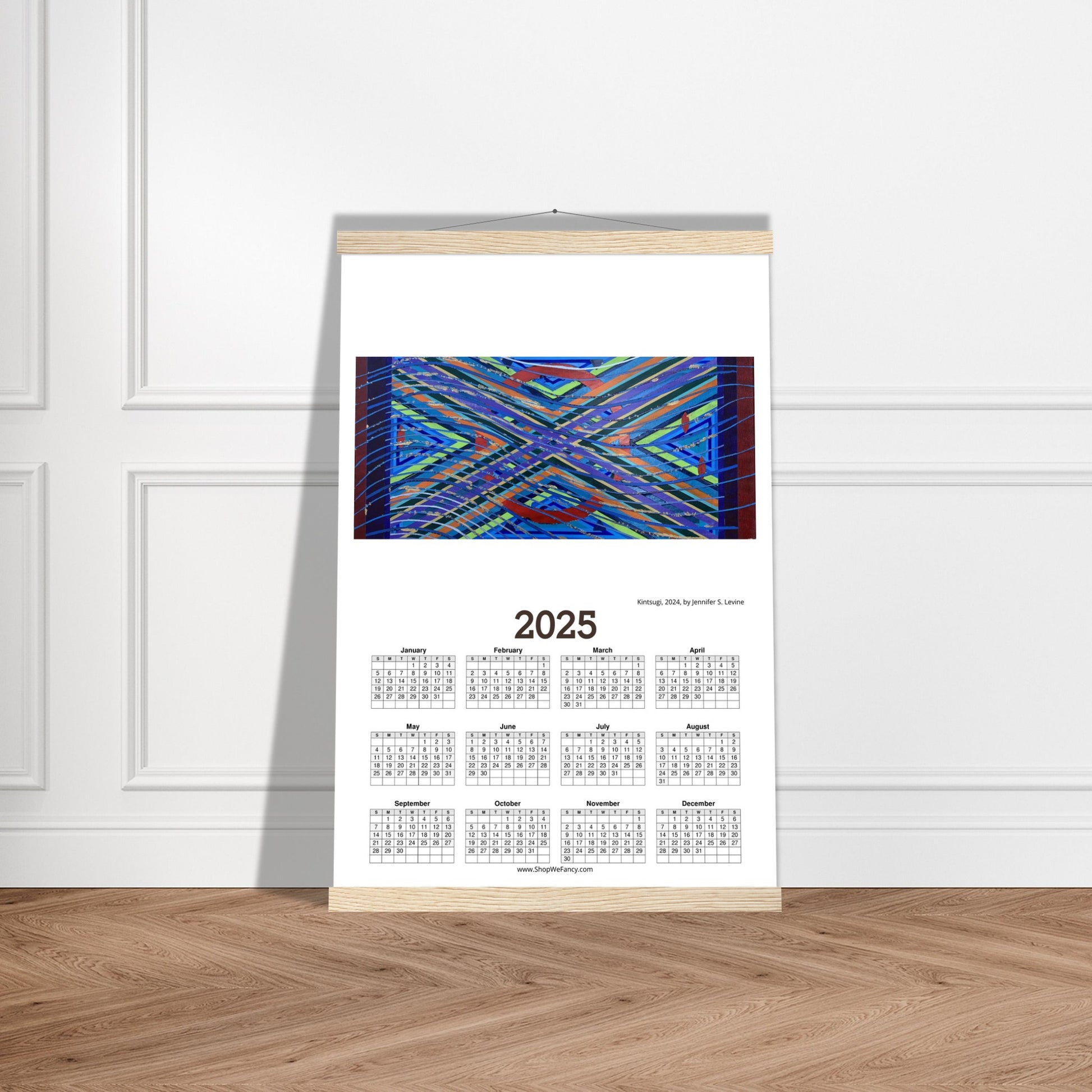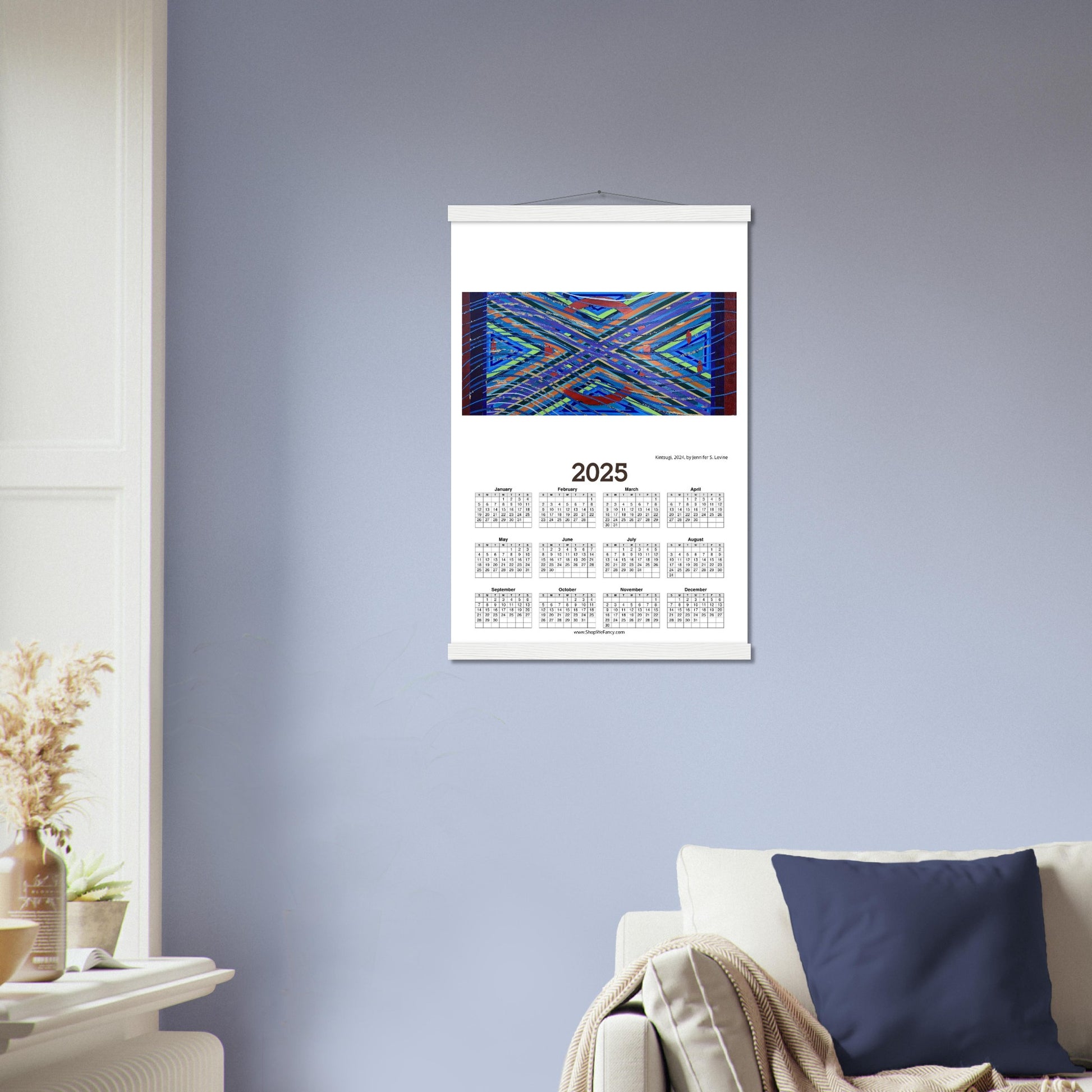KINTSUGI 2025 Year at a Glance on Premium Matte Paper Calendar with Hanger
KINTSUGI 2025 Year at a Glance on Premium Matte Paper Calendar with Hanger
Couldn't load pickup availability
Our minimalist wooden hangers are made with four magnetic wooden dowels, two that clamp to the top of your print and two that clamp to the bottom to give a vintage look and feel. The poster is made with heavier-weight white matte paper that has a natural, smooth uncoated finish that feels luxurious to the touch.
While the poster and hangers are packed separately in one box, final assembly is required. Don’t worry; it's a snap to put them together!
Features:
- The hangers are made from pine and come in natural wood, white, black or dark wood.
- The cotton rope attached at the top matches the hanger color.
- Designed magnetically, the hangers do not damage the poster and also makes it easy to switch prints, making it a versatile and durable option.
- The 200 gsm / 80 lb paper weight makes it durable and long-lasting.
- FSC-certified paper and hangers or equivalent certifications, depending on regional availability. It’s better for the people and the planet.
- Each poster and hanger is shipped in robust packaging, ensuring it arrives in pristine condition.
- Paper sizes may vary slightly by region. For the US and Canada, the measurement is in inches, while for the rest of the world, it is in centimeters.
ABOUT THE PAINTING PRINT ON THE CALENDAR:
Kintsugi, acrylic on canvas, 15 x 30 IN.
As an artist, I have long been fascinated by a Persian flaw. The term has evolved to mean “a deliberate mistake” but the etymology comes from Persian rug making and muslim craftsmanship. Traditional Persian rug makers leave a deliberate “flaw” in their design under the belief that only Allah in his creations is perfect. I bring up this concept because it is the exact opposite of what this piece, Kintsugi, represents and underscores the importance of embracing both.
Kintsugi is a 400 hundred year old Japanese method for repairing ceramics and translates to mean “gold seam or repair”. When a vessel is chipped or shattered, artisans use a laminating lacquer process which finishes with highlighting the seams in gold or silver powder. The construct behind this process is a culturally intrinsic belief that there is beauty in what is the imperfection. The idea is that one should embrace the flaws within objects and within oneself. It reminds us that our scars are beautiful, our healing to be celebrated and the new form we create has a uniqueness that we only would have seen within ourselves if it weren’t for the resiliency we were able to summon.
To bring it back to the Persian flaw juxtaposing the Kinsugi concept… we are all just a mess of mistakes we create or things that have happened to us, aren’t we? We aren’t Allah or whatever you want to call your god or belief system. Then, again, look at what our Creator made in us. Could there be a little divinity within us as we look around to recover and rebuild along our purpose journey? Maybe the very things we think are our weaknesses are what another sees as most beautiful.






















